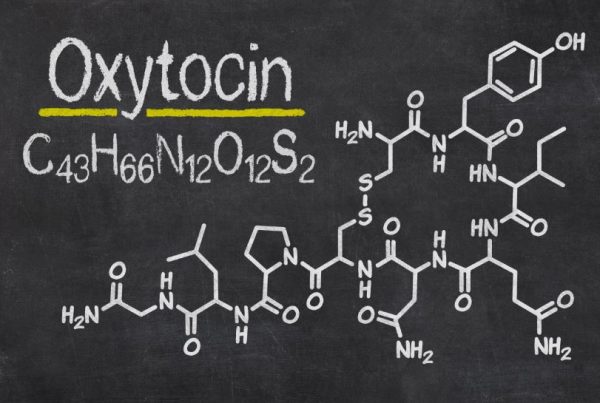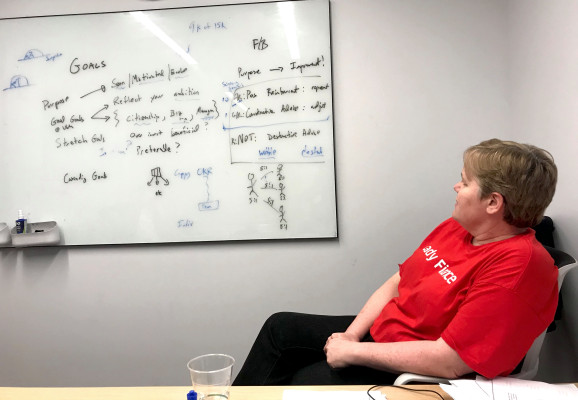The good news – experiments around the world have shown that humans are naturally inclined to trust others. The bad news, they don’t always.
Back to the good news – neuroscience tells us that the amount of oxytocin we produce, predicts how trustworthy we are of others. Not only that, oxytocin increases a person’s empathy, a useful trait for any school or employer where staff work together. Ultimately, high trust companies or schools are more productive – much like Dr Paul Browning advocates.
People at high-trust companies report: 74% less stress, 106% more energy at work, 50% higher productivity, 13% fewer sick days, 76% more engagement, 29% more satisfaction with their lives, 40% less burnout.
Therefore, given we know that productivity increases with trust and that oxytocin is associated with trust – find the oxytocin, to encourage productivity,to improve our schools?
Recognize excellence
I have harped on about recognition over reward and now I have some evidence for those claims. What is more, I now have a better understanding of when and how and who best to deliver that recognition. The neuroscience shows that recognition has the largest effect on trust when it occurs immediately after a goal has been met, when it comes from peers, and when it’s tangible, unexpected, personal, and public. Then there is an added bonus of employing public recognition – in that it not only celebrate successes AND also inspires / showcases excellence for others to learn from.
Challenge Stress
Achievable, challenge tasks, that require staff to work together releases… oxytocin (and adrenocorticotropin – that intensify people’s focus and strengthen social connections.) Point of note – the task needs a concrete end point.
Leave the “How” to them
Being trusted to figure things out is a big motivator. Nearly half of employees would give up a 20% raise for greater control over how they work. That said, I find school leaders(teachers at heart), find not helping – especially difficult. Resist the urge.
Thinking about this over night – I am sure this is why coaching, and coaching on the go is important for building capacity in others. As leaders we would be well advised to provide the panoramic view and expect staff to make specific application.
What do you need from me that enables YOU to make a decision? – Dan Rockwell
Autonomy also promotes innovation. It raises the importance of pre-task risk management and clear framing of the task in the first instance. Second, following the tasks and reflecting is equally important where autonomy is promoted. AAR or after-action-reviews encourages individuals and teams to share where and how positive deviations and shortfalls came about, so that others can build on their success or avoid them.
Value inexperience for its lack of conformity and constraint. Many organisation or companies encourage intergenerational mentoring for that reason.
Enable job crafting
Or choice and self-organisation. I do not foresee staff having “desks on wheels,” but autonomy is important.
Why does your desk have wheels? Think of those wheels as a symbolic reminder that you should always be considering where you could move yourself to be more valuable. But also think of those wheels as literal wheels, because that’s what they are, and you’ll be able to actually move your desk with them.
You’ll notice people moving frequently; often whole teams will move their desks to be closer to each other. There is no organizational structure keeping you from being in close proximity to the people who you’d help or be helped by most. – Handbook for New Employees at Valve Software Company
Share information broadly
Uncertainty leads to stress, which inhibits the release of oxytocin and undermines teamwork. In schools it is all to easy to think that “we” know.
Intentionally build relationships
Neuroscience experiments show that when staff intentionally build social ties at work, their performance improves. A Google study similarly found that managers who “express interest in and concern for team members’ success and personal well-being” outperform others in the quality and quantity of their work. Getting to know your staff beyond their role at school.
Facilitate whole-person growth
High-trust workplaces help people develop personally as well as professionally. Backward-looking annual performance reviews are outdated, inefficient and bias. I read this time and time again and still education drunkenly stumbled into this pothole.
With their heavy emphasis on financial rewards and punishments and their end-of-year structure, [performance man] they hold people accountable for past behavior at the expense of improving current performance and grooming talent for the future, both of which are critical for organizations’ long-term survival.
Peter Cappelli and Anna Tavis
Investing in the whole person has a powerful effect on engagement and retention and that required intentional, regular conversations and feedback.
Show vulnerability
Leaders in high-trust workplaces ask for help and this stimulates oxytocin production in others, increasing their trust and cooperation. Asking for help is a sign of a secure leader— one who engages everyone to reach goals.
In summary
The first responsibility of a leader is to define reality. The last is to say thank you. In between the two, the leader must become a servant. – Herman
Cultivate trust by setting a clear direction, giving people what they need to see it through, and getting out of their way. Sounds rather familiar.


